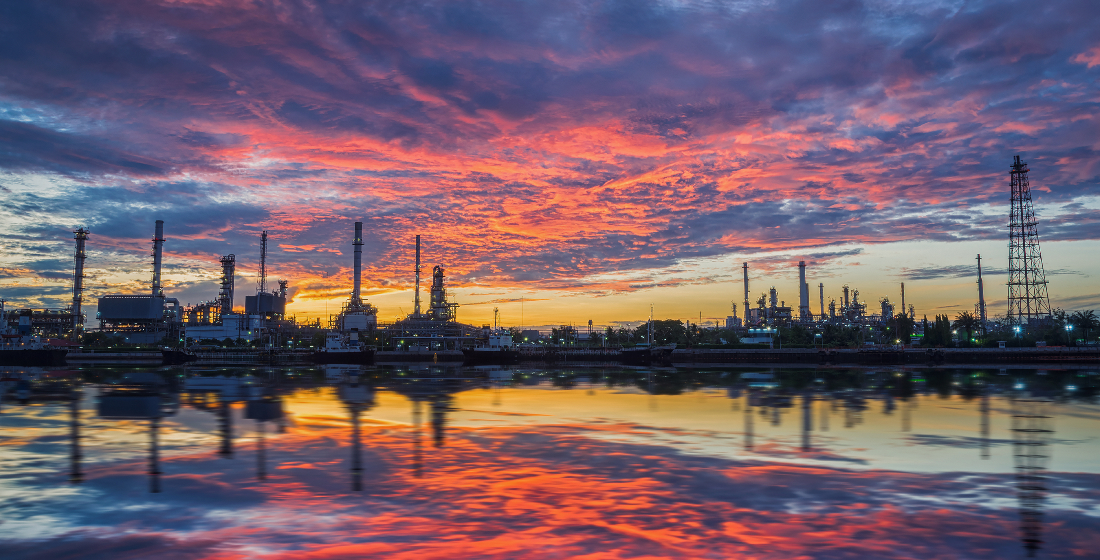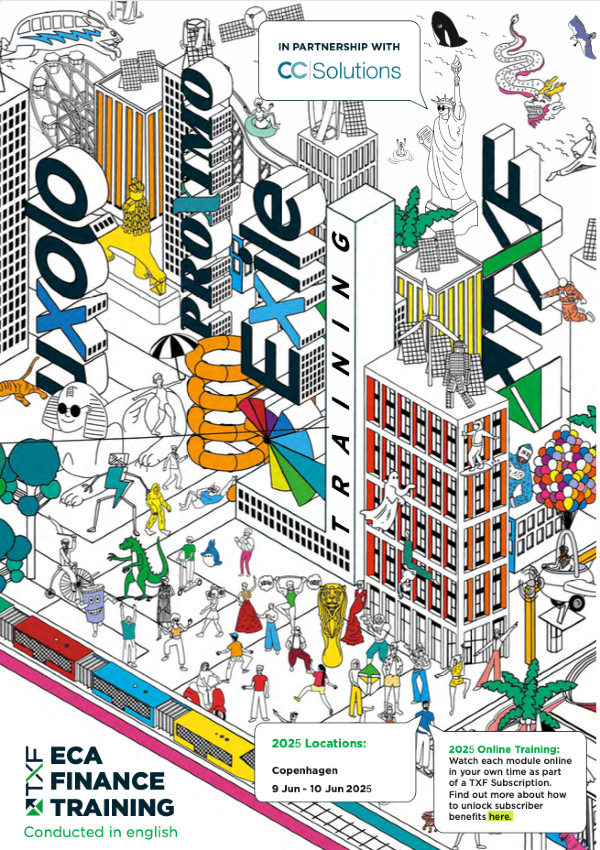Energy transition in Africa - part 1: Putting energy transition into context
It is estimated that over 600 million Africans do not have access to power, a figure that is expected to increase by 40 million per year. This rapidly growing need for energy amidst a deepening climate crisis poses a problem; how will African nations meet the energy needs of its people while keeping carbon emissions to a minimum?

In this first part we put Africa’s energy transition into context, highlighting that each country brings with it a particular set of circumstances which will influence the potential energy solution. We also look at the role of non-renewables in the effort to build reliable power generation for both industry and people.
Part two investigates the challenges and opportunities for export and project finance in the renewables sector for both large and small-scale energy projects and the potential for innovation within this space.
In the coming decades, rapid economic and population growth within Africa will require vast amounts of power, far more than is currently produced - and with it - investment. According to a report produced by the International Energy Agency (IEA) in 2019, African energy demand over the next two decades is expected to grow twice as fast as the global average, including an additional 500 million people who are expected to live in areas requiring some form of cooling.
However, last May the IEA set out the global roadmap to achieving Net Zero Emissions by 2050, which sets out the consequences of existing and stated policies for the energy sector. The IEA estimates that despite an increase in GDP and energy use in emerging markets, 750 million people will still have no access to electricity in 2050, more than 95% of them in sub‐Saharan Africa, and 1.5 billion people will continue to rely on the traditional use of bioenergy for cooking.
This will be a considerable challenge for the continent as conventional power sources come under increasing scrutiny given the stronger focus on climate mitigation and the SDGs in the wake of the pandemic. Large clean energy projects are not cheap and post-Covid, the infrastructure deficit for African sovereigns has increased significantly. While many major economies have seen accelerated vaccine rollouts and large stimulus packages most African nations have not. Sub-Saharan Africa in particular, has been hit hard, with economic activity estimated to have contracted by 2% in 2020, according to the World Bank. The pandemic has also exacerbated public debt vulnerabilities, which are high and continue to rise in many countries.
In the context of a rapidly deteriorating climate and sovereigns with substantial debt burdens, how will Africa governments leverage private and public capital to provide its citizens affordable, clean, sustainable, and readily available sources of power, while also avoiding the environmental degradation that characterised Europe and North America's industrial development?
The investment decisions are huge, the politics muddy, and the outcome by no means certain. Can multilateral and ECA budgets stretch to meet the huge volume of investment needed to realise the IEA’s net zero targets by 2050, especially given the amount of Covid-related funding being provided by the project and export finance community?
Increasing market interest
As we have seen elsewhere, environmental concerns have been a key motivating factor for financiers, and TXF Intelligence shows that the market has started to wake up to the opportunities. TXF’s Sustainability in Export Finance report 2020, notes that in just a few short years the market in Africa has diversified, moving away from oil & gas domination. The report shows that Africa is starting to host large renewables projects such as the Angola Solar project, with the MOF closing on a $759 million EKN-backed loan, suggesting that it might be possible to deploy large amounts of capital for the energy transition outside high income markets.
Earlier this year, the largest renewable energy investment in South Africa to date - the Redstone concentrated solar power plant - reached financial close on a heavily DFI-backed $825 million project financing. Large-scale renewables schemes are on the rise in Africa, however the bankability of such schemes are a long way from pure commercial backing. Furtermore, solar is still a fledgling sector for ECA debt, with only a handful of other large-scale solar projects to close in 2020, including TXF’s ECA/DFI-backed deal of the year 2020, the MOF of Angola's solar power project. The deal has a tenor of 18 years with an EKN-covered tranche of $663 million alongside a Development Bank of Southern Africa (DBSA) direct loan of $94 million.
These pathfinder projects do not mean the economic viability of large-scale solar projects is right for every project sponsor active in the 54 African nations. The continent will play host to renewable projects of all sizes across the renewable energy spectrum. From mega renewable projects capable of supplying much needed baseload power for Africa's industrialisation, all the way down to off-grid technologies powering small villages.
The challenge is not building one giant power grid from the Suez to the Cape of Good Hope, but in providing reliable and affordable power locally for these areas of high demand.
While renewable technologies are increasing in efficiency and decreasing in price, large-scale renewable projects in emerging markets are often made bankable via a subsidy/grant from DFIs like DBSA. As this type of financing is not always available, cleaner brown, and importantly bankable, projects such as gas-fired plants will be a growth space, especially given the natural gas reserves in Africa. Therefore, gas will dovetail the transition from coal and oil-fired power generation to renewables in all emerging markets.
Understanding the complexities of the continent
It is vital to highlight that across Africa, various countries are at different phases of electrification, and that each country will have a particular pathway toward achieving sustainable power generation for both industry and its people.
An analysis of IEA data shows that South Africa has a well-developed electricity network and one of the highest rates of electricity access in sub-Saharan Africa. In this context, the least-costly way to connect those without access is in most cases via the grid with the rest of the population served by mini-grids and off-grid technologies.
However, South Africa is also heavily reliant on coal, but is making efforts to diversify the power mix with natural gas and renewables, including concentrating solar power (CSP).
According to the IEA, Africa has the richest solar resources on the planet, but has installed only 5GW of solar PV capacity, accounting for less than 1% of global capacity. Therefore, there is vast potential for further solar projects, especially in South Africa, with its well-established grid and huge tracts of flat, sun baked land. As such, large scale solar projects have the potential to dominate the transition to clean and reliable energy in South Africa.
The Democratic Republic of the Congo (DRC) is in an entirely different situation. Less than 10% of the population has access to electricity, making it the country with the largest number of people without access in Africa after Nigeria. Under these conditions, mini-grids will be vital in bringing power to the DRCs population.
However, unlike South Africa, almost all electricity generation in the DRC comes from renewables, mostly hydropower, and the Inga project, the world’s largest hydropower scheme, has the potential to provide much more. If the project is a success, the DRC will be able to not only fully power an expected rise in cobalt mining operations, but it will also be able to export clean energy to its neighbours.
This does not mean hydropower will power the country’s dispersed population centres. Rather, decentralised solutions will be the cheapest way to provide electricity access to the huge share of the population currently without it. These may be renewable sources of power or, given the availability of fuelwood in rural areas and the affordability of charcoal in urban areas, non renewable resources. As such the increase in the efficiency of cookstoves and kilns for making charcoal will play a far larger role in the DRC than South Africa, where electricity is expected to be the main source of power for cooking.
These are only two brief summaries of the power situation in two different African nations, and it should be stated that the challenges and opportunities differ widely from nation to nation. It also should be acknowledged that although Africa has huge renewable potential, non-renewable resources have, and will continue to play, a significant part.
Fossil fuels will be part of the solution
The role of export finance in African renewable energy deals is growing - albeit slowly. TXF Intelligence revealed that in 2020, seven renewable power projects closed, with a total deal volume of $3.8 billion.
However, these deals were dwarfed in terms of deal volume by two much larger LNG projects, with a combined debt total of $18.5 billion. This is also set to be joined by another large-scale LNG project, the $17 billion Rovuma LNG project in Mozambique, which is expected to close by the end of this year or early 2022.
Indeed, Africa is home to 40% of global gas discoveries so far this decade with Mozambique, Angola, Ghana, and Nigeria having proven gas resources. As a result, it would be wrong to assume, or even demand, that future energy projects across Africa forgo fossil fuels entirely. In fact, in North Africa, LNG already meets around half of the region’s energy needs, while in sub-Saharan Africa around 5% of power is generated by gas.
LNG is already, and will continue to be, part of the equation, not least because renewable sources of power are intermittent by their very nature. Without sun, without wind, without rain - the power dries up. As a result LNG corresponds well with Africa’s industrial growth, which depends on a reliable electricity supply that fossil fuels can provide. Dependable sources of energy are much needed, with the IEA estimating in 2018 that 80% of sub-Saharan African companies suffered frequent electricity disruptions which led to economic loss.
As such, during the process of increasing access to power, many have argued that Africa must not be denied a ‘just transition’; one where African nations must be allowed to make use of their large resource endowments, particularly LNG, but also coal and heavy fuel oils if necessary.
“African countries should use the resources available to them, but make sure that they do that with considerations of renewable energy projects coming on board,” said Obbie Banda, underwriter at the African Trade Insurance Agency.
“But to expect the continent to simply go in the direction of entirely renewable energy is not possible. It's not a reasonable expectation, because you look at continents that are more developed, you look at Asia, look at North America, even countries in Europe, some of them still rely, to some extent, on gas and coal.”
“What might happen is, you still have your 10, 20 or 100MW coal plant, which is then complemented by hydro, wind and solar.
A key fact that many point to when arguing for use of non-renewables is that if you switched off all the fossil fuel power stations in Africa today, the world would hardly notice. This is because the entire continent of Africa contributes around 2% of total global emissions, according to the IEA.
Indeed, we must not forget that LNG produces almost 50% fewer greenhouse gas emissions compared with coal, according to the U.S. Energy Information Administration. This, combined with an abundance of renewable resources means that the African continent has the potential to produce the greenest industrialisation the world has ever witnessed.
But who and how much is needed to finance Africas’s energy transition? In part 2 we look at the challenges and opportunities for export and project finance in the African renewables sector for both large and small-scale energy projects, as well as the potential for innovation.





